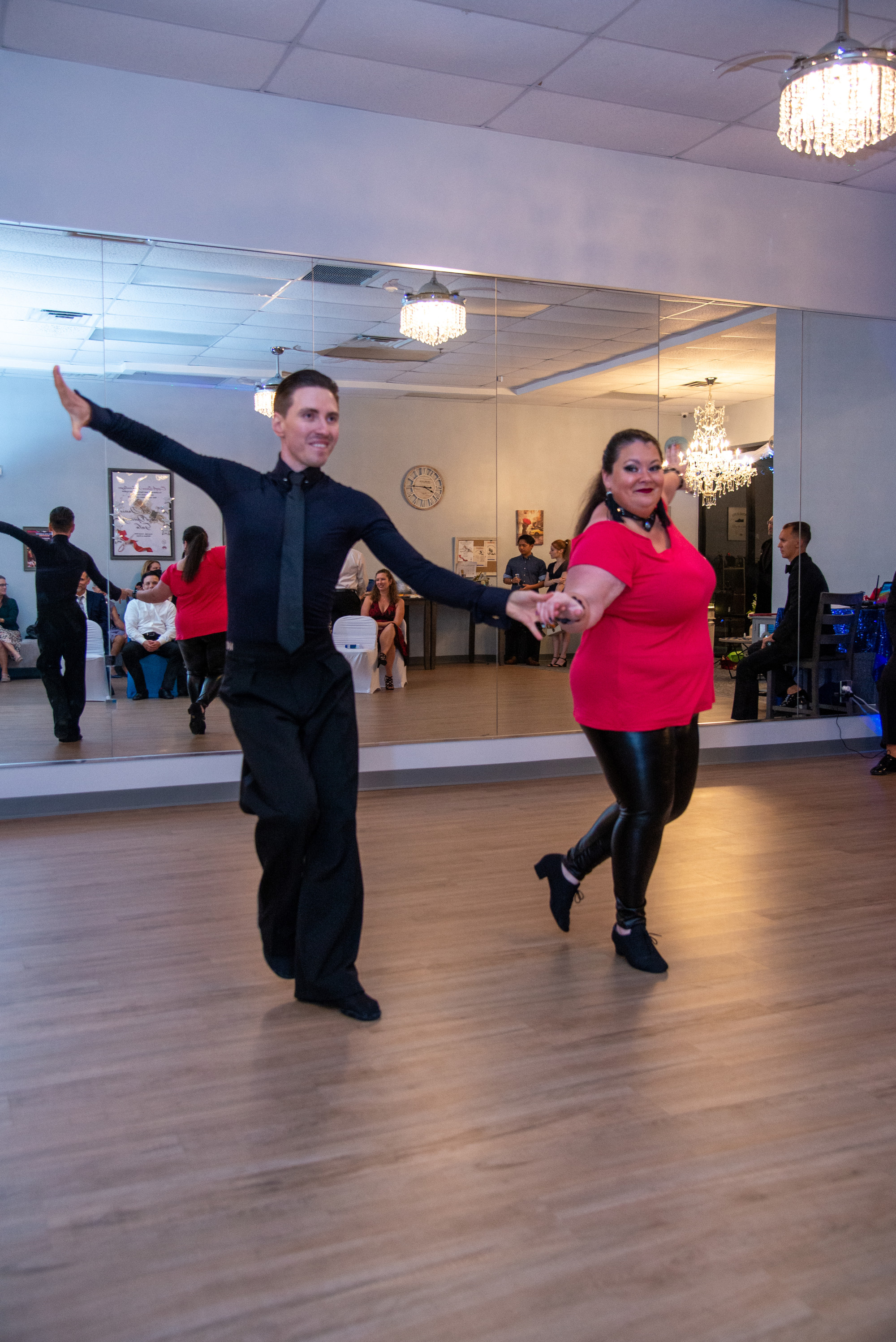Mambo Dance Lessons Near Horizon West, Florida
Looking to get private dance lessons near Horizon West, Florida? We've got you covered! We are conveniently located in Ocoee and ready to help you on your dance journey!

Mambo
Mambo is a lively and rhythmic Latin dance style that originated in Cuba in the late 1930s and gained popularity in the United States during the 1940s and 1950s. It is characterized by its energetic footwork, hip movements, and syncopated rhythms. Here are some key features of mambo:
1. **Cuban Roots**: Mambo emerged from traditional Afro-Cuban dances such as the danzón and rumba, blending elements of African and Spanish dance styles with jazz and big band music influences.
2. **Syncopated Rhythms**: Mambo is danced to music with a distinctive 4/4 time signature, featuring syncopated rhythms and accents. Dancers often emphasize the off-beats and add flair with syncopated footwork and body movements.
3. **Basic Steps**: The basic steps of mambo typically involve forward and backward steps, side-to-side movements, and hip swaying. Partners dance in a close embrace, with the leader guiding the follower through a series of steps and turns.
4. **Hip Action**: Hip action is a prominent feature of mambo, with dancers incorporating hip rolls, isolations, and Cuban motion into their movements. This adds flair and sensuality to the dance.
5. **Cross-body Lead**: One of the fundamental patterns in mambo is the cross-body lead, where the leader redirects the follower's momentum across their body, often accompanied by a turn.
6. **Improvisation and Expression**: Mambo allows for improvisation and expression, with dancers interpreting the music and adding their own style and personality to their movements. This can include body isolations, arm styling, and playful interactions between partners.
7. **Performance and Competition**: Mambo is performed both socially and competitively, with dancers showcasing their skills in clubs, dance studios, and ballroom competitions. In competitive settings, dancers may incorporate flashy spins, lifts, and tricks into their routines.
8. **Continued Evolution**: Over the years, mambo has evolved and influenced other Latin dance styles, including salsa and cha-cha-cha. However, it remains a distinct and beloved dance form with a rich cultural heritage.
Overall, mambo is celebrated for its infectious energy, vibrant music, and expressive movements, making it a popular choice among dancers and audiences alike.